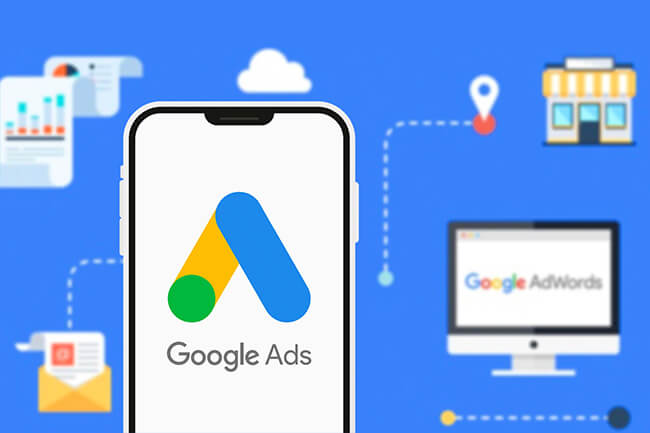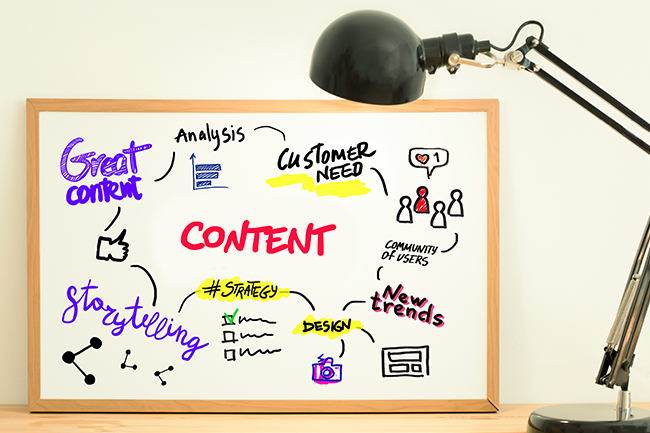Within the dynamic digital marketing field, PPC advertisements are critical in assisting businesses to become visible as well as draw targeted traffic whereby making them successful in the process. Looking at google ads benchmarks 2023 shows that importance of PPC has increased more while google ads were identified as main avenue for businesses wishing to become more visible in search engine results. The latest figures predict significant worldwide PPC advertising investments, emphasizing a leader status of digital marketing.
Google Ads Industry Benchmarks 2023 for Search Ads: Major Trends
Understanding the latest trends in search ads is crucial for staying ahead. Let’s break down the key findings in simple terms:
- Click-Through Rate (CTR): Click-through rates increased for 21 out of 23 industries year over year (YoY). Despite Business Services and Industrial and Commercial sectors experiencing slight decreases, these were overshadowed by significant increases in other industries.
- Cost Per Click (CPC): CPC rose YoY for 61% of industries, with only 35% experiencing a decrease. Notably, Apparel, Fashion, and Jewelry maintained the same CPC. This aligns with our 2022 data indicating a general increase in CPC.
- Conversion Rate (CVR): Most industries witnessed a YoY decrease in conversion rates, with Beauty and Personal Care and Education and Instruction being exceptions. This resulted in 91% of industries facing both increased Cost Per Lead (CPL) and reduced conversion rates.
- Cost Per Lead (CPL): CPL increased YoY for all industries except Automotive Sales and Beauty and Personal Care. This implies that 91% of industries experienced a rise in the cost of acquiring leads through search ads, although the latest updates for 2023 indicate a slowing trend in these increases.
The search ads landscape presents more challenges, but navigating it skilfully can lead to rewarding outcomes. While the journey may seem more intricate this year, executing strategies effectively can bring about significant benefits.
Average Click-Through Rate – CTR for Google Ads
Your Average CTR is the key metric for understanding is the actual effectiveness of your search ad. It shows the click-through rate after they see your ad. The clear trends in 2023 indicate that there has been an apparent shift of Search Ads towards the use of more engaging ad formats. This change amplifies the CTR accordingly forcing the advertisers to adjust accordingly to the trend to make sure the target audience focuses on their ads.
Understanding your CTR is straightforward. This is obtained by dividing the number of clicks you get from your ad by the number of times your ad is shown on people’s screen( impressions). Ideally, one would want to have a higher CTR, which means your ad is more captivating for your audience.
The average click-through rate for Google Ads in 2023 was 6.11%. This benchmark acts as a reference point for advertisers to determine the performance of their advertisements in relation to the competition. Achieving a CTR above this average is a signal of an effective ad that the target audience perceives well. One of the most important things that you have to do in order to optimize the success of your Google Ads campaign is to monitor regularly the CTR and try to better it in every way possible to increase the likelihood of converting the customer as well as the ads.
Average Cost Per Click – CPC for Google Ads
Average Cost Per Click (CPC) in Google Ads or Microsoft Ads is one of the key metrics that is calculated as division of total campaign spend by clicks. Clicks are important for search campaigns as they represent the behaviors that might have led to a conversion of a consumer.
The Average CPC, which is determined by the Google Ads auction algorithms in real-time, is crucial in choosing bidding strategies, creating ad copy, setting budgets, and other decisions.
Although, typically with these types of accounts, higher CTRs are lower in the experience of a CPC, yet it does not always necessarily work out in the real-world situations. Among the determinants of CPC include competition which could be very fierce in some industries. Average CPC for the year 2023 is $4.22 in Google Ads.
Average Conversion Rate for Google Ads
The second consistent measure is the conversion rate signifying the number of individuals out of those who clicked on one of your ads who in reality did any activity. To find this, you divide the conversion rate by the number of clicks.
If you calculate an average conversion rate for the campaign it will be equal to the campaign success as a whole measure of the success of the campaign.
For instance, in 2023, the average conversion rate on Google Ads is 7.04%. This figure provides clear indications on the success rate of the campaign that was based on obtaining the main objective.
Average Cost Per Lead – CPL for Google Ads
CPL is a key indicator that will help you realize how effective your campaigns are and the costs. Cost per lead does arise from the ratio from the total cost spent on advertising and the number of leads originated from the campaign.
For instance, if CPL is $53.52, you spend such amount for acquiring the average lead as Google Ads.
Industry-Specific Search Ads Benchmarks for Google Ads
Diving into industry-specific benchmarks provides actionable insights tailored to your business:

As illustrated by the graph above, the industry with the highest costs per category are:
- Average Cost Per Click – Attorneys & Legal Services $9.21
- Average Cost Per Lead – Career & Employment $132.95
- Average Click Through Rate – Art & Entertainment – 11.78%
- Average Conversion Rate – Animals & Pets 13.41%
The industry with the lowest costs per category are:
- Average Cost Per Click – Arts & Entertainment and Real Estate $1.55
- Average Cost Per Lead – Automotive $21.12
- Average Click Through Rate – Attorneys & Legal Services 4.76%
- Average Conversion Rate – Apparel/Fashion & Jewelry 1.57%
Implications of Google Search Ads Benchmarks for Your Business
Analyzing Google Search Ads benchmarks is vital for businesses seeking success in the digital advertising realm. The benchmarks provide valuable insights into various metrics, influencing your overall advertising strategy.
Here are the key implications:
- Click-Through Rate (CTR): A good CTR means that your ad copy is well perceived and received by the audience. Low CTR could mean a need for more persuasive ad copies or changes in targeting.
- Cost Per Click (CPC): CPC affects your budget. A lower CPC is favorable, indicating efficient spending. High CPC may require optimization in ad relevance, targeting, or bidding strategy.
- Conversion Rate: A high conversion rate indicates effective ad campaigns. A lower rate may necessitate improvements in landing pages, ad messaging, or targeting precision.
- Cost Per Conversion (CPA): Lower CPA is desirable as it indicates cost-effectiveness. A higher CPA may require adjustments in targeting or messaging to enhance campaign efficiency.
Enhance Your Google Ads Strategy
To ensure that we have covered the fundamentals and rudimentary media metrics taking into consideration Google Search Ads, we can now move forward into transforming these insights into conductive strategies that would allow you to elevate your entire advertising development.
Consider the following steps to enhance your Google Ads strategy:
- Refine Ad Creatives: Regularly evaluate and refresh your ad creatives. Ensure they align with current trends, resonate with your target audience, and convey compelling messages that drive engagement.
- Optimize Targeting Parameters: Fine-tune your targeting criteria based on the insights from benchmarks. Adjust demographics, locations, and other parameters to reach the most responsive audience for your products or services.
- Bid Strategy Adjustment: Adjusting your bidding strategy can help if CPC is an issue. Try different automated bidding options or manual bidding adjustments until you find the right balance that yields the desired visibility while controlling costs.
- Landing Page Experience: A successful landing page experience can also indicate a high conversion rate. It is vital to ensure that your landing pages are engaging, load fast, and create a clear visibility path for visitors to take the intended actions.
- Ad Extensions Utilization: Use ad extensions to make your ads more visible and to provide additional details. Use site link extensions, callout extensions, and structured snippets to help you get more informative and appealing ads.
- Keyword Analysis and Expansion: Regularly review your keyword performance. Identify high-performing keywords and expand on them. Simultaneously, refine or exclude underperforming keywords to maintain relevance.
- Responsive Ad Testing: Embrace responsive ad formats and conduct A/B testing. Experiment with various headlines, descriptions, and images to identify combinations that resonate best with your audience.
- Monitoring and Adjustment Cadence: Establish a routine for monitoring ad performance and adjusting strategies accordingly. By doing regular check-ins, you stay agile, responding to the changes in the virtual world and making the most of chances.
Conclusion
Keeping an eye up on industry benchmarks will make it easier to collect key information on the Google Ads landscape in 2024, with the help of which businesses will be able to make data-driven decisions. Customize your approach and refine your marketing strategy in order to be distinctive in the busy digital world. Adopt the milestones, grab the opportunities, and watch your Google Ads campaigns thrive.
Ready to enhance your Google Ads strategy? Contact our PPC Agency for a personalized consultation and take the first step towards digital marketing success.





Tell us your thoughts in the comments